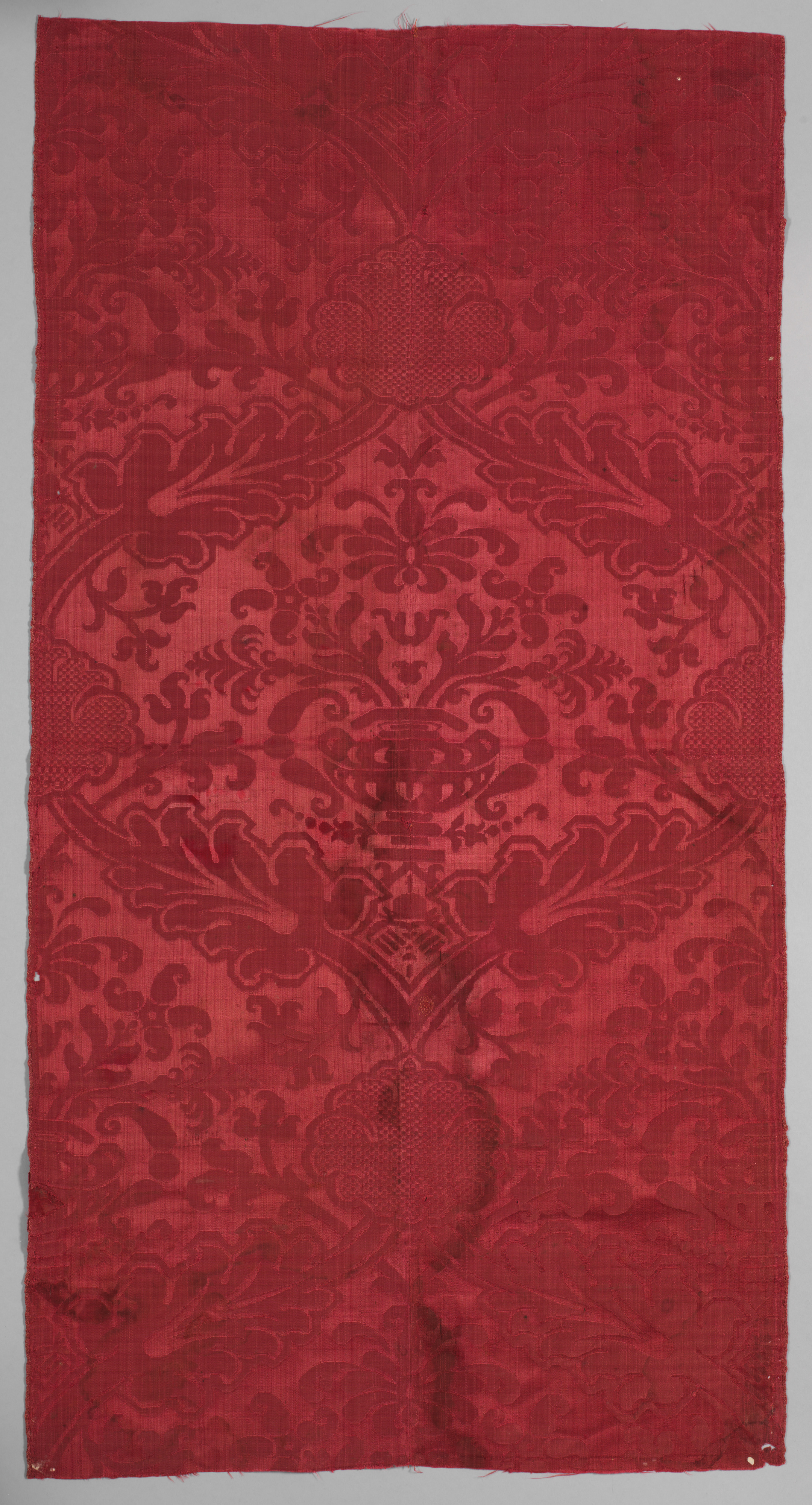Crimson Silk Damask
Not on view
Beginning in the twelfth century, the Tuscan town of Lucca and the Adriatic port of Venice dominated European silk weaving, which subsequently spread to Genoa, Florence, and Milan. Spanish silk weavers, long established in Granada and Valencia, were, by the 1500s, emulating their Italian counterparts. Raw silk, imported from the Near East or cultivated locally, was spun, dyed, spooled, and woven within family workshops under the patronage of wealthy, sometimes noble, silk manufacturers.
This crimson silk damask was displayed in Arms, Armor, and Textiles: 1492–1776, on view at the George Bruce branch, New York Public Library (visible at far right in the photograph of 1934), and later in European Textiles and Costume Figures, at Walton High School (visible at far right in the photograph of February 16, 1939).
[Elizabeth Cleland, 2020]
This image cannot be enlarged, viewed at full screen, or downloaded.
This artwork is meant to be viewed from right to left. Scroll left to view more.





